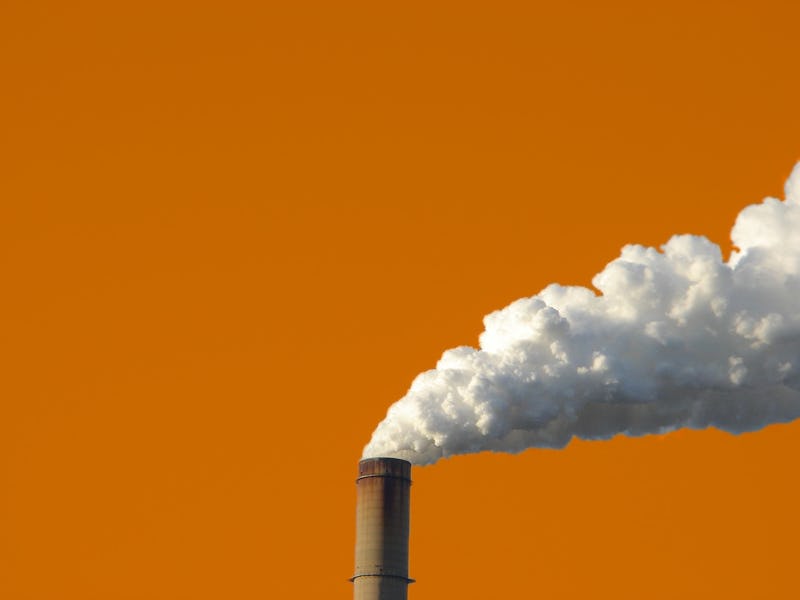A New Pollution Milestone Has Put Earth's Atmosphere in "Surreal Territory"
"I wish we had better news, but we don’t."

The Earth just broke one of the worst kinds of records. As scientists at the Scripps Institution of Oceanography announced Tuesday, Earth’s average atmospheric CO^^2 concentration reached a new monthly average record of 414.8 parts per million in May 2019.
It’s a noticeable change from the monthly average recorded a year ago, when Scripps researchers recorded a reading of 411.3 p.p.m. Year after year, these values are plotted on the “Keeling Curve,” which is a map of historical CO^^2 concentrations measured every day since 1958 at the Scripps laboratory on Mauna Loa in Hawaii. Named for the late Charles David Keeling, Ph.D., the curve has risen steadily since its inception, and the rate of its rise shows no sign of slowing.
Ralph Keeling, Ph.D., the director of the Scripps CO^^2 Program and Charles’ son, tells Inverse that the rate of atmospheric CO^^2 concentration rise seems to be accelerating.
“If you look over a decade or so, you’ll see that the growth rate is increasing slowly decade by decade,” he points out.
This is the second time the lab has made news in as many months. In mid-May, the Scripps laboratory reported a different record: the highest atmospheric CO^^2 concentration on Earth in the entire history of human beings. That number, 415.26 ppm, was a one-day high, which could be attributed to various environmental factors on top of a general rising trend in global CO^^2 emissions. The new reading shows the average over all the readings made in a month, which is a lot harder to argue with.
The early Mauna Loa observations showed only minor increases — less than 1 p.p.m. per year. In the ‘90s, the rate of increase rose to about 1.5 p.p.m. annually, and over the last decade, global CO^^2 concentrations have risen by an average of 2.2 p.p.m. per year.
"We’re in kind of surreal territory right now."
The difference between May 2018 and May 2019 is 3.5 p.p.m., suggesting that the rate of carbon dioxide emissions entering Earth’s atmosphere is rising each year.
While a single year having a worse reading than the previous one isn’t necessarily a nail in the coffin, says Keeling, over time, the trend can’t be ignored.
“Once you get out to a decade, it’s pretty damn meaningful,” he says.
Over even longer timescales — like those encompassed by the Mauna Loa observations in combination with ice core samples that recorded prehistoric CO^^2 concentrations — humanity’s role becomes extremely obvious. Starting in the Industrial Revolution, which marked the beginning of the fossil fuel era, the historical CO^^2 curve hits the roof.
“The more you back off and look at the big picture the more you see the hand of human beings affecting the atmosphere,” Keeling says. “We’re in kind of surreal territory right now,” he adds.
The Keeling Curve shows just how pronounced the rise in carbon dioxide concentrations have been during recent human history.
While the amount of carbon dioxide in the Earth’s atmosphere seems grim, Keeling says these accurate readings at least give people trying to address the issue a place to start.
“Gaining control requires knowledge, so this is just part of this process,” he points out. “Maybe a first step and not a very complete step, but an essential first step.”
Scientists have made it quite clear what humanity needs to do in order to curb greenhouse gas emissions to slow global heating, but it remains to be seen whether politicians have the will to propose policies to discourage polluters and reward the adoption of cleaner energy technologies.
For now, Keeling and his colleagues will keep their watch over the Earth.
“We’re just reporting what the Earth is doing,” he says. “I wish we had better news, but we don’t.”